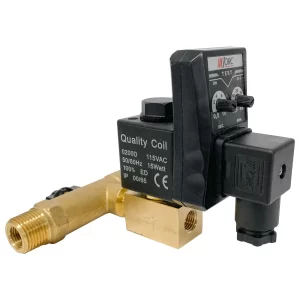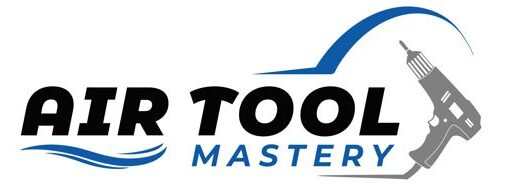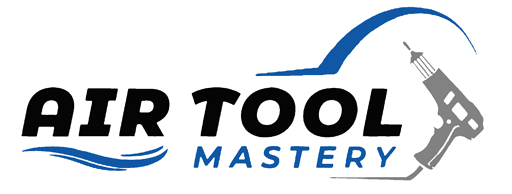Compressed air drain valves are a critical component in pneumatic systems, designed to remove condensate, moisture, and other waste substances from the air line. The importance of these valves cannot be overstated, as they contribute to the system’s efficiency, longevity, and overall performance.
Just to put their importance into perspective, a single drop of water in a compressed air line can cause damage to equipment that use compressed air, leading to costly repairs and downtime. Therefore, it is essential to understand how these valves work and how to choose and maintain them properly.
How do Compressed Air Drain Valves Work?
Compressed air drain valves work by automatically removing accumulated moisture and debris from the air line. This is crucial because as compressed air travels through the system, it cools down, causing the water vapor to condense and form droplets. These droplets can mix with other impurities such as oil and dust, resulting in a hazardous mixture that can lead to equipment malfunctions.
In order to prevent this, compressed air drain valves are installed at specific points in the system where condensate is likely to accumulate, such as after coolers and air receivers. These valves use a combination of float and solenoid mechanisms to detect and remove the accumulated waste substances.
Why are Compressed Air Drain Valves Important in Pneumatic Systems?
Compressed air drain valves play a pivotal role in pneumatic systems, ensuring the smooth and efficient operation of the entire system. They are primarily responsible for eliminating condensate, moisture, and other waste materials from the compressed air system. By doing so, they help to maintain the quality of the compressed air, which is crucial as the presence of these impurities can degrade the performance of the system.
Moreover, these impurities, particularly moisture and water, can lead to rust and corrosion in the air piping and equipment, significantly reducing their lifespan. Rust and corrosion can also lead to blockages, increasing the risk of costly equipment failures and downtime.
Types of Compressed Air Drain Valves
There are three main types of compressed air drain valves: manual, timed electric solenoid, and demand or level-sensing. Each type has its own unique characteristics and is suitable for specific applications.
Manual Air Drain Valves
As their name hints, manual air drain valves require manual intervention to operate. The user physically opens or closes the valve to release accumulated condensate. These types of valves are simple and cost-effective, making them suitable for smaller systems with low condensate levels.
The outstanding thing about these air drain valves is that they require constant monitoring and human intervention, which can be inconvenient and time-consuming in larger systems that produce significant amounts of condensate.
Timed Electric Solenoid Air Drain Valves

Timed electric solenoid air drain valves operate based on a preset time interval. The valve automatically opens and closes at regular intervals to release condensate. They are relatively easy to install and require minimal maintenance, making them ideal for systems that produce moderate levels of condensate.
On the downside, timed electric solenoid air drain valves may not be the most energy-efficient option as they can potentially release excess condensate if the preset time interval is not accurately calibrated.
Demand or Level-Sensing Air Drain Valves

Demand or level-sensing air drain valves are the most advanced type of compressed air drain valves. They use sensors to detect the condensate level in the system and only release it when necessary, making them highly efficient. They are also self-cleaning and require minimal maintenance.
These, too, have their shortcoming as they are expensive, and their sensors may require occasional calibration to ensure accurate operation. They are best suited for large systems that produce high levels of condensate.
Factors to Consider When Choosing a Compressed Air Drain Valve
When selecting a compressed air valve, several factors need to be taken into consideration.
Type of Compressor System
The kind of system matters because each system is designed to handle different levels of condensate. Some systems, like the float-operated valves, are best suited for smaller systems with lower condensate levels. Others, like the demand or level-sensing valves, are designed for larger systems that produce high amounts of condensate.
Operating Pressure and Temperature
These are crucial factors since the drain valve must withstand the system’s operational conditions. Some valves might not perform optimally under high pressure or temperature conditions.
Air Flow Rate
The valve should be capable of handling the air flow rate in your system. A valve that cannot keep up with the airflow rate can become a bottleneck, affecting the overall efficiency of the system.
Maintenance Requirements
Maintenance is another important factor. Some valves, like the timed electric solenoid air drain valves, require minimal maintenance and are easy to install. Others, like the demand or level-sensing valves, require routine calibration to maintain accuracy. Choosing the right valve, considering all these factors, can significantly increase the efficiency and longevity of your compressed air system.
Installation and Maintenance Tips
Proper Placement in the System
When it comes to drain valves, correct positioning within the compressor system is essential. The valve should be installed at the system’s lowest point or at any point where condensate accumulates. Avoid placing the valve in an area where it could be exposed to mechanical damage or excessive heat.
Regular Cleaning and Inspection
Maintenance of your drain valve goes beyond installation. To ensure optimal performance, regular cleaning and inspection of the valve is necessary. This prevents the accumulation of dirt and grime that can cause blockages and inhibit function. Regular checks also allow for early detection of any potential issues, such as leaks or malfunctions, helping to avoid costly downtime.
Recommended Replacement Intervals
Like any component within a compressed air system, drain valves have a certain lifespan and should be replaced periodically. The recommended replacement interval can vary based on the type of valve and the specific conditions of your system.
However, as a general rule, a thorough inspection and potential replacement of your drain valve should be incorporated into your annual maintenance schedule. Always refer to the manufacturer’s instructions for specific guidance.
Consider Automation for Efficiency
Automated drain valves have become increasingly popular due to their efficiency and cost-effectiveness. These valves are designed to automatically open and close based on a preset timer or sensor, eliminating the need for manual operation. This not only saves time but also ensures that the valve is functioning consistently and efficiently, reducing the risk of human error.
Common Issues with Compressed Air Drain Valves
Malfunctioning due to Debris or Buildup
One of the most common issues with compressed air drain valves is malfunctioning caused by debris or buildup. Dirt, rust, and other particulates can accumulate over time, blocking the internal passages of the valve and inhibiting its function. This can result in the valve failing to open or close properly, resulting in inefficient drainage of condensate. Regular cleaning and inspections can help detect and prevent such issues.
Leakage and Loss of Compressed Air
Another frequent problem associated with drain valves is leakage, leading to the loss of compressed air. This can be a result of worn-out seals, improper installation, or damage to the valve’s components. Leaks not only waste valuable compressed air but can also lead to a drop in the system’s overall pressure, affecting its performance. It is important to periodically check for signs of leaks and take immediate corrective action if any are found.
Electrical Failures in Solenoid Valves
In the case of solenoid drain valves, electrical failures are a common issue. A solenoid valve operates through an electric current passing through a coil, which creates a magnetic field that opens or closes the valve. If there is a failure in the electrical circuit, such as a blown fuse, wiring issues or a faulty coil, the valve may cease to operate. Regular electrical checks and maintenance help ensure the solenoid valve remains in optimal working condition.
Inadequate Maintenance and Inspection
Overall, inadequate maintenance and inspection are significant factors contributing to the malfunctioning of compressed air drain valves. These valves operate continuously in high-pressure environments, making them susceptible to wear and tear over time. Regular maintenance checks can help identify and address potential issues before they become major problems, ensuring the valve’s proper functioning.
Troubleshooting Tips for Common Issues
Identifying the Source of the Problem
The first step in troubleshooting is to identify the source of the problem. To find the problem, check for visible signs of wear or damage on the valve and the attached equipment. Listen out for unusual sounds that may indicate internal issues. Use a leak detector to identify any leaks in the valve or the compressed air system.
Cleaning and Maintenance Techniques
Regular cleaning and maintenance are crucial to ensure the longevity and optimal performance of compressed air drain valves. When cleaning, make sure to turn off the system and carefully disassemble the valve. Use a mild solvent and a soft brush to remove any dirt or debris, rinse thoroughly, and allow the components to dry before reassembling then lubricate moving parts as needed.
Potential Solutions and Repairs
Once you’ve identified the problem, you can decide on the best course of action for repairs. For minor issues like leaks, replacing the worn-out seal might be enough. For electrical issues in solenoid valves, you might need to replace the faulty coil or fix the wiring. However, if the valve is heavily damaged or worn out, it could be more cost-effective to replace the entire valve. Always consult your user manual or a professional if you’re unsure about any aspect of the repair process.
Conclusion
In conclusion, a compressed air drain valve is a crucial component within a range of systems and applications, responsible for controlling the flow of compressed air. These valves are available in various types, each with their own unique features and functionalities. The selection of a suitable valve relies on several factors including but not limited to, the application, function, and system pressure.
Safety considerations, such as installing a safety valve, are also essential to prevent overpressure conditions. Maintenance and troubleshooting also play a key role in the valve’s longevity and optimal performance. Regular cleaning, using the right techniques, and vigilance in identifying potential problems can prevent major issues.
We hope that you found this guide helpful in understanding the basics of compressed air drain valves and their maintenance. For more information on pneumatics, feel free to reach out to us via the comment box.

